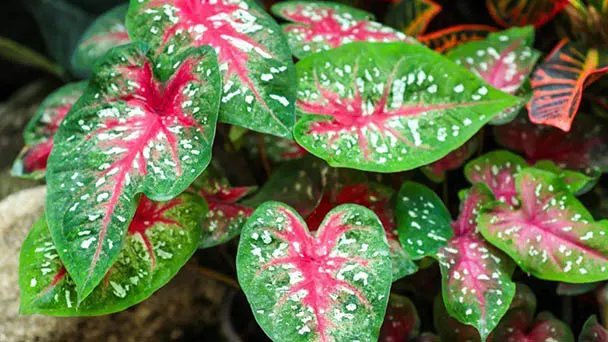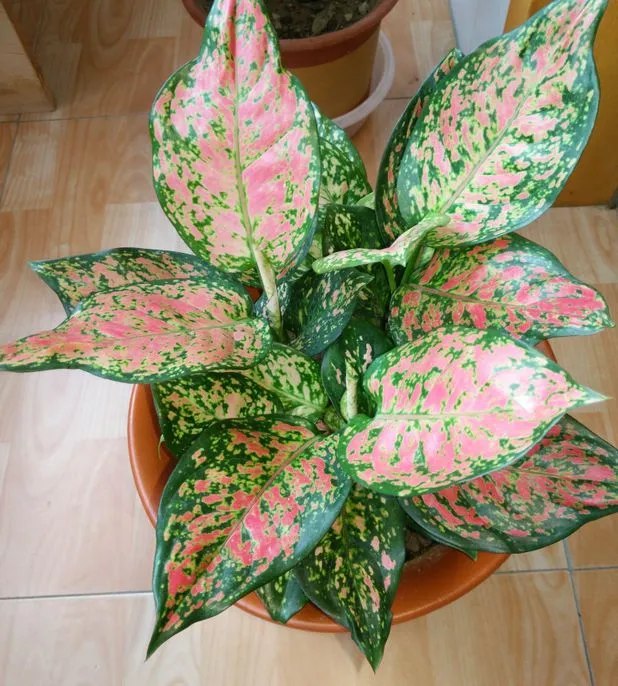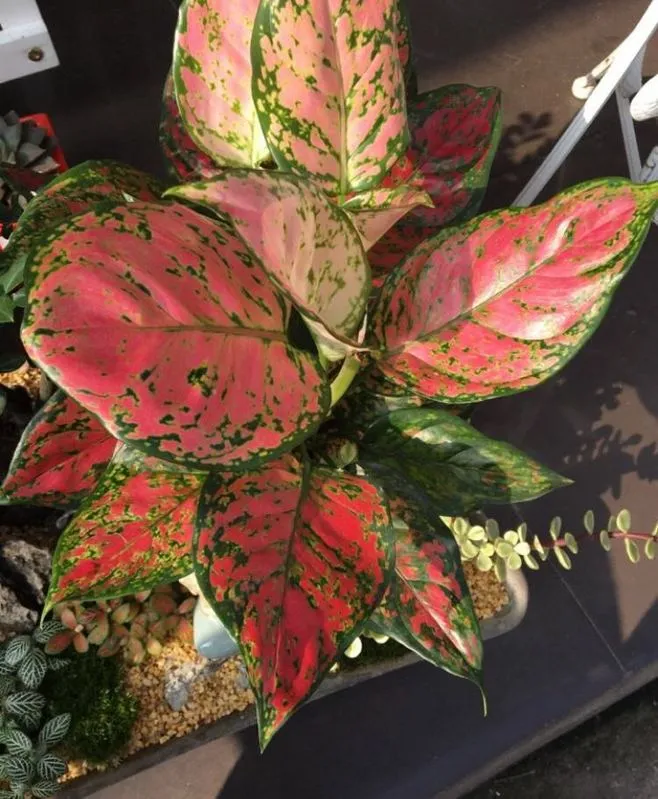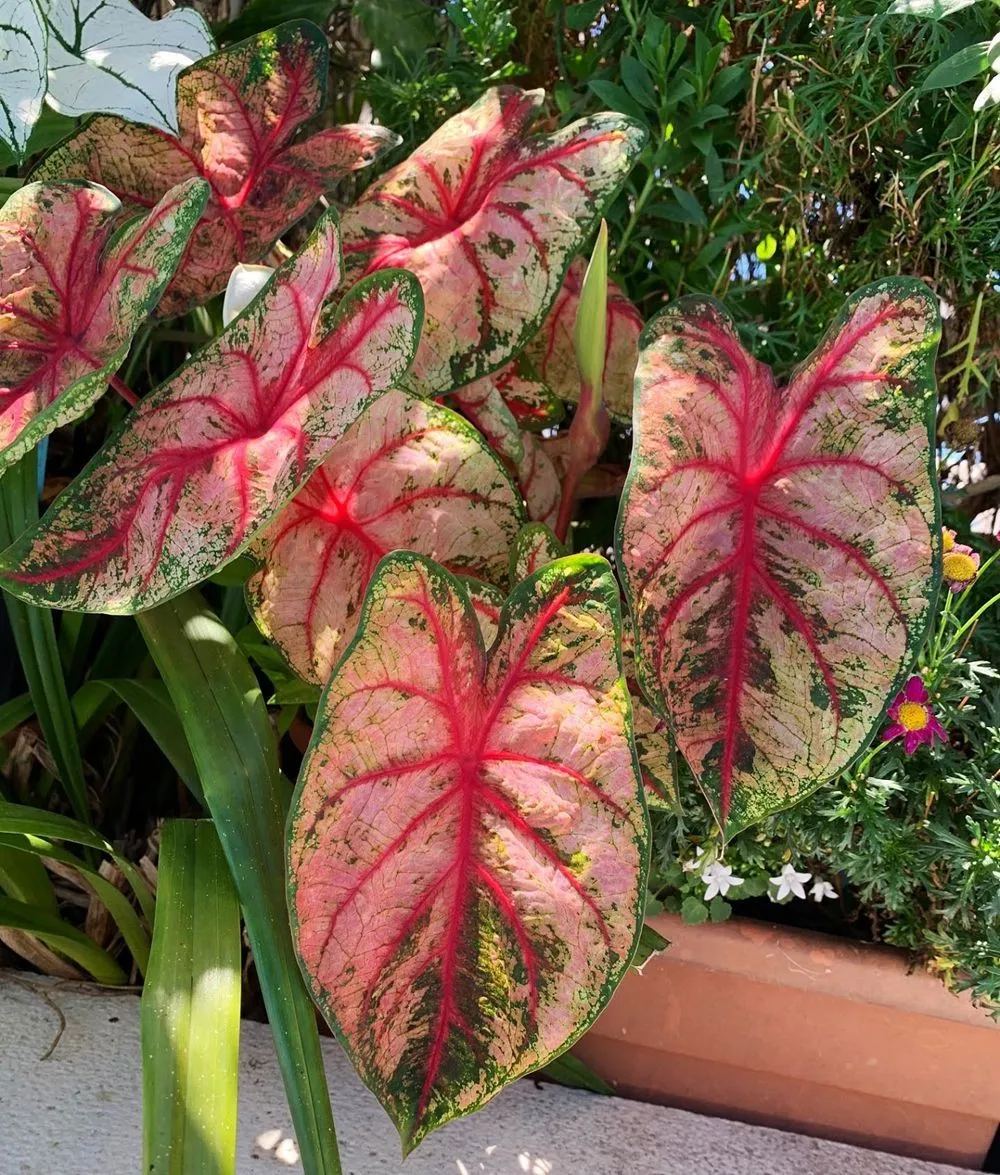How To Grow And Care For Caladium Plant
Written by Ivy
Nov 27 2021

Caladium plant is a bulbous plant with tubers under the soil. After autumn, the Caladium plant will fall leaves and will not grow leaves until the next spring. Caladium plant is a high-temperature plant, which likes heat and is afraid of cold. When Caladium plant starts to grow leaves and buds, it cannot be short of water, but it needs to be watered and fertilized after the weather warms up.
 The natural flowering period of Caladium plant is from March to April, but the flowering time will be advanced or delayed due to different maintenance environment. When plants begin to grow leaves and buds in early spring, Caladium plant cannot be short of water, but it needs to wait until the weather warms up before watering and fertilizing. We try to spray water on the leaves of Caladium plant in the morning or afternoon, so that Caladium plant can bloom more easily.
The natural flowering period of Caladium plant is from March to April, but the flowering time will be advanced or delayed due to different maintenance environment. When plants begin to grow leaves and buds in early spring, Caladium plant cannot be short of water, but it needs to wait until the weather warms up before watering and fertilizing. We try to spray water on the leaves of Caladium plant in the morning or afternoon, so that Caladium plant can bloom more easily.


Caladium Plant Quick InfoWhen does Caladium Plant Bloom & HarvestCaladium Plant Care in DetailCaladium Plant WateringCaladium Plant SoilCaladium Plant LightCaladium Plant TemperatureCaladium Plant HumidityCaladium Plant FertilizerCaladium Plant PruningCaladium Plant RepottingCaladium Plant Pest & Disease ControlCaladium Plant PropagationCaladium Plant Propagation from DivisionCaladium Plant Propagation from Cutting
Caladium Plant Quick Info
| Botanical/Scientific Name | Caladium |
| Common Name | Elephant Ear |
| When to Grow/Bloom/Harvest | Plant during spring/Bloom anytime from spring into autumn |
| Uses | Bedding plants |
| Origin | South America |
| Light Care | Medium light area |
| Soil Care | Rich, well-drained soil |
| Temperature Care | 60-70 degree F |
| Humidity Care | Mist the plant frequently |
| Watering | Spray water on the leaves |
| Pruning Care | Prune every 2-3 weeks |
| Fertilizer Care | Soluble liquid fertilizer |
| Propagation | Dividing the tuber |
| Toxic | Poisonous to people |
| Flower Color | White with curled edges stippled with green |
When does Caladium Plant Bloom & Harvest

Caladium Plant Care in Detail
Caladium Plant Watering
Caladium plant is a plant with high demand for water. Try to water frequently and keep the soil slightly moist, because the leaves of Caladium plant are very broad and the evaporation rate of water is relatively fast. Spring and autumn are the peak growth seasons of Caladium plant every year. During this period, more water is consumed. It must meet the demand for water. Only sufficient water can promote vigorous growth. Usually, we need to water Caladium plant once every 3-4 days in spring and autumn to make the soil slightly wet. In case of rainy season, reduce the frequency appropriately. Although Caladium plant likes humid environment, it is not resistant to waterlogging. Therefore, even in the peak growth season, do not let there be ponding in the soil, otherwise it is easy to Rett roots.Caladium Plant Soil
Caladium plant prefers well drained, fertile and loose acidic soil, so the basin soil is more suitable to use some rotten leaves as culture soil, and then add some sand wood or sawdust. In this way, the soil of Caladium plant can meet its needs for soil and help Caladium plant grow better.Caladium Plant Light
Caladium plant likes a cool environment and does not have a strong demand for light. For the Caladium plant just bought home, we can let the plant receive appropriate light every day without too much or being irradiated by strong light. Otherwise, it is easy to burn the leaves and cultivate them in a cool and ventilated place.Caladium Plant Temperature
Caladium plant likes warmth. We'd better control the temperature between 18 ~ 25 ℃, which is the most suitable temperature for the growth of Caladium plant. The temperature should not exceed 32 ℃ or lower than 10 ℃, which will affect the growth of the plant.Caladium Plant Humidity
For the Caladium plant that has just changed its environment, we should not water it too much, because its current roots can not absorb too much water and are prone to waterlogging. When the soil surface is dry, it can be watered. At the same time, it can also be watered on or around Caladium plant leaves to maintain humidity. Caladium plant can grow well only in the environment of high humidity. Therefore, we should often spray the plant and the surrounding ground with water at ordinary times, and water and spray wine with warm water or cold boiled water in winter. If there are brown spots on the leaf surface in winter, it is the reason why the water temperature is too low.Caladium Plant Fertilizer
The nutrient composition of Caladium plant shall be mainly nitrogen fertilizer, followed by phosphorus and potassium fertilizer. Since Caladium plant is a foliage plant, if we apply appropriate nitrogen fertilizer, it can make the leaf color more beautiful. In addition, we can use urea with nitrogen content of 46% to prepare a 0.1% solution, and add potassium dihydrogen phosphate with phosphorus content of more than 50% and potassium content of more than 30% to prepare a 0.2% solution for external topdressing. The effect is better when the dew is not dry in the morning or in the evening. When spraying, spray the positive and negative sides of the leaves with a small hole sprayer, spray 1 times a week, stop for 1 times after continuous spraying for 3 times, then spray continuously. Special attention should be paid to that the concentration of fertilizer applied to Caladium plant should not be too high, otherwise it is easy to cause leaf burns, fertilizer damage, and even plant death in serious cases. During dormancy in winter and too hot in summer, we should stop fertilizing Caladium plant.
Caladium Plant Pruning
Caladium plant needs to be trimmed during growth, but appropriate tools need to be prepared before trimming. We can prepare special scissors or blades and carbendazim solution. In order to prevent bacterial infection, we can also disinfect with potassium permanganate solution or carbendazim solution, which should be diluted by 1000-2000 times. In the growth process of Caladium plant, it is inevitable to grow many untimely branches. Trim them, such as bare branches, dense branches, overlapping branches, Cross branches, delicate branches and pest branches, so as to make their structure more loose. After trimming the branches of Caladium plant, we have to trim the leaves. Cut off the diseased leaves, dead leaves and lush leaves of Caladium plant with sterilized scissors. After thinning and leaf cutting, the plant type of cat eye taro will be very transparent but pay attention not to trim too many leaves, so as not to cause the withering of Caladium plant due to non photosynthesis.Caladium Plant Repotting
The substrate of Caladium plant repotting is rich in nutrients, which is conducive to future growth. The substrate should be breathable, conducive to root respiration, and have better drainage. Specifically, we can use peat soil mixed with some sand as the substrate for Caladium plant basin replacement. After decanting, Caladium plant shall be properly trimmed. It is mainly to trim the roots of Caladium plant, cut off the rotten roots and comb the messy roots. Be careful when pruning, don't hurt the healthy roots, and then dry them. After preparing the matrix, we can pour out the original soil in the Caladium plant basin, and then fill in a part of the new soil. After the trimmed wound of Caladium plant is dried, it can be put into the basin again. We can put the plants into the basin and then fill in another part of new soil to compact the soil.Caladium Plant Pest & Disease Control
Caladium plant is vulnerable to red spider, scale insects, leaf spot, brown spot and black spot. When red spider is found, we can spray it with 2000 times of 40% dicofol emulsion or 1000 times of 20% dicofol wettable powder. In case of scale insects, a small amount can be manually peeled off and destroyed. In case of a large number of scale insects, we should master the nymph incubation period and kill them with 1000-1500 times of 90% crystal trichlorfon. When leaf spot, brown spot and black spot occur in Caladium plant, we should timely cut off the diseased branches and leaves and destroy them for a small amount of harm. In case of a large amount of harm, we can spray 500 times of 50% wettable zinc substitute.Caladium Plant Propagation
Caladium Plant Propagation from Division
- Division in spring
- Slightly acidic soil
- Separate planting on pot
- Control temperature and humidity

Caladium Plant Propagation from Cutting
- Select time
- Select tender shoots
- Soaking rooting
- Insert flowerpot
- Film covering
Latest Updated
- Benefits of Bugleweed - 7 Science-backed Health Benefits
- Bugleweed Dangers & Side Effects - Is It Poisonous?
- How to Plant Evergreen Trees - What You Should Know
- When to Plant Evergreens - Grow Guide for Evergreen Trees
- 12 Wonderful Evergreen Shrubs for Your Garden
- 12 Popular Evergreen Plants with Pictures for Beginners
- When And How To Prune A Lilac Bush Like a Pro
- How to Grow & Care for Lilac Vine (Hardenbergia Violacea)
- Japanese Lilac Tree (Syringa Reticulata) Care & Propagation Guide
- Shumard Oak Pros and Cons - What to Know
Popular Articles
- Winter maintenance of Antirrhinum Majus
- How to Grow Terminalia Mantaly Tree
- How to Grow and Care for Crossostephium Chinense
- How to grow Antirrhinum Majus in spring
- Peristeria Elata (Dove Orchid) Profile: Info & Care Guide
- Underwatered Snake Plant (Sansevieria Trifasciata) - Signs And How To Fix
- How to Care for Brazilian Jasmine Plant (Mandevilla Sanderi)
- How to Grow & Care for Graptopetalum Purple Delight in Summer
- Rosa Chinensis (China Rose): Plant Growing & Care Tips
- How to Care for Baby Sun Rose (Aptenia Cordifolia)